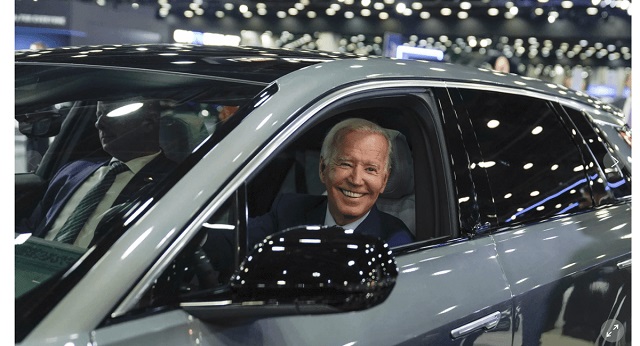COVID-19
Court Ruling on Murthy Misses Point Entirely
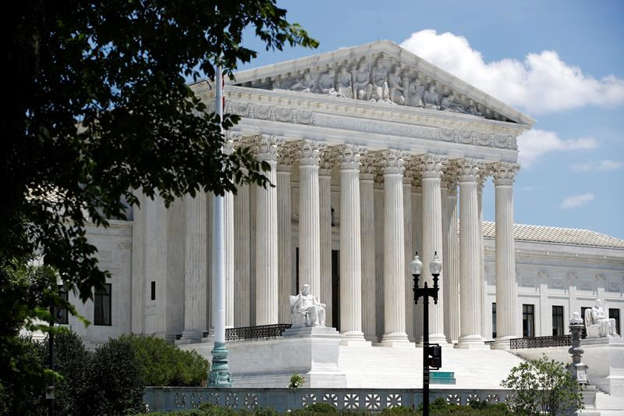
From the Brownstone Institute
The United States Supreme Court ruled, in a 6 to 3 decision, that the plaintiffs in the most important free speech case in decades did not have standing to ask for preliminary injunctive relief.
That is wrong.
In her majority opinion, Justice Amy Coney Barrett bent over sideways to avoid judging the case on its merits – the allegation is that various and sundry government agencies coerced private social media companies to remove posts and tweets and such they did not like – and focused instead on whether or not the plaintiffs had the right, or standing, to ask for and be granted such relief.
The plaintiffs, essentially, had their content throttled or removed from social media platforms at the behest of the government because they did not follow the government line on the pandemic response and election security, daring to question things like social distancing – even Dr. Anthony Fauci has admitted they just made that up – and how secure – or unsecure – a “vote-by-mail” election could possibly be.
The request before the court was to allow an injunction against a number of government agencies that barred improper communication with the social media platforms. The question of whether those agencies did in fact do that – essentially violating the First Amendment rights of the plaintiffs – does not appear at issue. As Justice Samuel Alito (joined in opposition to the ruling by Justices Clarence Thomas and Neil Gorsuch) said in his blistering dissent, that unquestionably happened.
The case, known as Murthy V. Missouri, involves two states and a number of private plaintiffs, all claiming that they were improperly censored – and thus damaged – by federal agencies and/or the dubious “cut out” front groups they created. Alito focused on one plaintiff – Jill Hines, who ran a Louisiana health-related (read pandemic response criticism) that was consistently degraded by Facebook after calls and pronouncements from the White House – in his dissent, noting that she unquestionably had standing (even Barrett admitted that plaintiff was closest, as it were), especially in light of the fact the government itself admitted the plaintiff had been damaged.
In today’s ruling, “The Court, however, shirks that duty and thus permits the successful campaign of coercion in this case to stand as an attractive model for future officials who want to control what the people say, hear, and think,” wrote Alito. “That is regrettable. What the officials did in this case was more subtle than the ham-handed censorship found to be unconstitutional (in a separate case), but it was no less coercive. And because of the perpetrators’ high positions, it was even more dangerous. It was blatantly unconstitutional, and the country may come to regret the Court’s failure to say so. Officials who read today’s decision…will get the message. If a coercive campaign is carried out with enough sophistication, it may get by. That is not a message this Court should send.”
Barrett wrote that, while she was not opining on the merits of the case, the plaintiffs could not show standing to receive a preliminary injunction. Such an injunction would have immediately barred government abuse going forward, but Barrett held, basically, that just because it did happen doesn’t mean it will happen again and therefore the plaintiffs are not entitled to preliminary (or prospective) relief.
As part of her reasoning, Barrett said that social media platforms did act on their own, at least on occasion, as part of their standard “content moderation” efforts and there was little or no “traceability” back to specific government individuals showing an immediate and direct correlation between a government compliant and a private company action.
Wrong.
First, in the Hines matter, even Barrett noted there was an element of traceability (that was enough for Alito to say she unquestionably had standing to seek relief and, therefore, the case should have been decided on its merits).
Second, companies like Facebook, which in the past have paid huge fines to the government, are in a very precarious position vis-a-vis federal regulation. From “Section 230” protections – a government code that limits their exposure to civil liability when deciding to drop content – to ever-growing threats of further government intervention and potential anti-trust actions, social media companies are internally incentivized to comply with government requests.
In other words, it is not at all a coincidence that a very large percentage of social media execs are “former” government employees and elected officials.
“In sum, the officials wielded potent authority. Their communications with Facebook were virtual demands,” Alito wrote. “And Facebook’s quavering responses to those demands show that it felt a strong need to yield. For these reasons, I would hold that Hines is likely to prevail on her claim that the White House coerced Facebook into censoring her speech.”
In her ruling, Barrett made other significant errors. First, she referred to the “Election Integrity Partnership” (EIP) as a “private entity,” and therefore able to make requests of social media companies.
In fact, the EIP (a group of academic “misinformation specialists”) was morphed into existence by the Department of Homeland Security, specifically its Cybersecurity and Infrastructure Security Agency, typically known as CISA. The EIP was funded by the government, many of its workers were former (though for many, ‘former’ may be a stretch) federal security agency employees, and the EIP specifically and consistently did the bidding of CISA when asked.
For Barrett to call the EIP a “private entity” shows a complete (intentional?) misunderstanding of the legal landscape and the reality of censorship-industrial complex.
The EIP and other government-sponsored cutout groups that make up the censorship-industrial complex are as independent from the government and the deep state as a foot is independent from a leg.
Barrett also claimed that similar government activities seemed to have lessened in the recent past, making the need for the going-forward injunction unnecessary.
Such a statement is impossible to prove as being true or false – especially after today – but making the assumption that it is even vaguely true, Barrett again misses the mark. If the government is censoring less now than it did two years ago it is because of the massive amount of public attention that has been drawn to the despicable practice by the press and, to be blunt, this very lawsuit.
CISA, etc. did not wake up one morning 18 months ago and say ‘Hey, we better cool it on this” because they suddenly realized they were most likely violating the Constitution; they did so because of the public – and Congressional – pressure.
And now with at least the legal pressure lessened (and an election coming up), to believe that the activities will not increase is naïve to the point of childish – that’s why this future, going forward, prospective injunction was so important.
That didn’t stop the Biden administration from crowing and, presumably, figuring out to ramp up the program for November.
Critics of the decision were loud and voluminous. Appearing on Fox News, legal commentator Jonathan Turley said that “standing issues” are often “used to block meritorious claims” and that the government’s “censorship by surrogate makes a mockery of the First Amendment.”
“The Supreme Court’s decision,” said White House press secretary Karine Jean-Pierre, “helps ensure the Biden administration can continue our important work with technology companies to protect the safety and security of the American people.”
Matt Taibbi, one of the reporters behind the outing of the “Twitter files,” noted that KJP’s statement is astonishingly egregious, but also very telling. She essentially admits government censorship is occurring and claims it is good:
That “important work,” of course, includes White House officials sending emails to companies like Facebook, with notes saying things like ‘Wanted to flag the below tweet and am wondering if we can get moving on having it removed ASAP.’ The Supreme Court sidestepped ruling on the constitutionality of this kind of behavior in the Murthy v. Missouri case with one blunt sentence: “Neither the individual nor the state plaintiffs have established Article III standing to seek an injunction against any defendant.”
“The great War on Terror cop-out, standing — which killed cases like Clapper v. Amnesty International and ACLU v. NSA — reared its head again. In the last two decades, we’ve gotten used to the problem of legal challenges to new government programs being shot down precisely because their secret nature makes collecting evidence or showing standing or injury difficult, and Murthy proved no different.”
Dr. Jay Bhattacharya, an internationally recognized Stanford medical professor, is one of the private plaintiffs in the suit. Bhattacharya is one of the co-authors of the Great Barrington Declaration, which called for a more targeted and rational response to the pandemic response. When it comes to standing, he points directly to an email from then-National Institutes of Health Chief (Tony Fauci’s sort-of boss) Francis Collins, calling on his fellow government employees to engage in a “devastating takedown” of Bhattacharya and the Declaration itself.
Barrett wrote that “Enjoining the Government defendants, therefore, is unlikely to affect the platforms’ content-moderation decisions,” an opinion Bhattacharya was having none of.
“Unlikely to continue to be damaged?” asked Bhattacharya. “How do we know that? And now because of this ruling we have no legal protection from it happening. The court ruled that you can censor until you get caught and even then there will be no penalty.”
Because of the focus on standing, Bhattacharya likened today’s ruling to giving the go-ahead to “broadly censor ideas” as long as you make sure not to traceably censor a specific individual.
A disappointed Bhattacharya has hopes for the future – the case was, again, not decided on its merits and is simply remanded without the injunction back to federal district court in Louisiana – but thinks electeds need to pass laws to stop the censorship.
“At this point, Congress has to act and this needs to be an election issue,” Bhattacharya said.
John Vecchione, New Civil Liberties Alliance Senior Litigation Counsel and the lawyer for four of the five private individuals (including Hines and Bhattacharya) said today’s ruling was “not in accordance with the facts” of the situation.
“There is a level of unreality about this opinion,” Said Vecchione, adding that it reads like a “roadmap for government censors.”
While some in the media have tried to identify this case as having “right-wing” support, Vecchione noted it was originally filed while Donald Trump was president and therefore goes far beyond partisan politics to the heart of the rights of American citizens.
The suit, as noted, goes back to district court and Vecchione says they will continue to gather facts and depositions and even more specific instances of “traceability” – he says they already have enough, but Barrett did not agree – and keep working it through the courts. He said he expects to be back at the Supreme Court sometime in – hopefully – the near future.
“Meanwhile, any government agency, any administration can censor any message they don’t like,” Vecchione said.
And no matter a person’s politics, that is just plain wrong.
Or as Justice Alito wrote:
“For months, high-ranking Government officials placed unrelenting pressure on Facebook to suppress Americans’ free speech. Because the Court unjustifiably refuses to address this serious threat to the First Amendment, I respectfully dissent.”
Republished from the author’s Substack
COVID-19
Trump DOJ seeks to quash Pfizer whistleblower’s lawsuit over COVID shots

From LifeSiteNews
The Justice Department attorney did not mention the Trump FDA’s recent admission linking the COVID shots to at least 10 child deaths so far.
The Trump Department of Justice (DOJ) is attempting to dismiss a whistleblower case against Pfizer over its COVID-19 shots, even as the Trump Food & Drug Administration (FDA) is beginning to admit their culpability in children’ s deaths.
As previously covered by LifeSiteNews, in 2021 the BMJ published a report on insider information from a former regional director of the medical research company Ventavia, which Pfizer hired in 2020 to conduct research for the company’s mRNA-based COVID-19 shot.
The regional director, Brook Jackson, sent BMJ “dozens of internal company documents, photos, audio recordings, and emails,” which “revealed a host of poor clinical trial research practices occurring at Ventavia that could impact data integrity and patient safety […] We also discovered that, despite receiving a direct complaint about these problems over a year ago, the FDA did not inspect Ventavia’s trial sites.”
According to the report, Ventavia “falsified data, unblinded patients, employed inadequately trained vaccinators, and was slow to follow up on adverse events reported in Pfizer’s pivotal phase III trial.” Overwhelmed by numerous problems with the trial data, Jackson filed an official complaint with the FDA.
Jackson was fired the same day, and Ventavia later claimed that Jackson did not work on the Pfizer COVID-19 shot trial; but Jackson produced documents proving she had been invited to the Pfizer trial team and given access codes to software relating to the trial. Jackson filed a lawsuit against Pfizer for violating the federal False Claims Act and other regulations in January 2021, which was sealed until February 2022. That case has been ongoing ever since.
Last August, U.S. District Judge Michael Truncale dismissed most of Jackson’s claims with prejudice, meaning they could not be refiled. Jackson challenged the decision, but the Trump DOJ has argued in court to uphold it, Just the News reports, with DOJ attorney Nicole Smith arguing that the case concerns preserving the government’s unfettered power to dismiss whistleblower cases.
The rationale echoes a recurring trend in DOJ strategy that Politico described in May as “preserving executive power and preventing courts from second-guessing agency decisions,” even in cases that involve “backing policies favored by Democrats.”
Jackson’s attorney Warner Mendenhall responded that the administration “really sort of made our case for us” in effectively admitting that DOJ is taking the Fair Claims Act’s “good cause” standard for state intervention to mean “mere desire to dismiss,” which infringes on his client’s “First Amendment right to access the courts, to vindicate what she learned.”
Mendenhall added that in a refiled case, Jackson “may be able to bring a very different case along the same lines, but with the additional information” to prove fraud, whereas rejection would send the message that “if fraud involves government complicity, don’t bother reporting it.”
That additional information would presumably include the FDA’s recent admission that at least 10 children the agency has reviewed so far “died after and because of receiving COVID-19 vaccination.”
“The truth is we do not know if we saved lives on balance,” admitted FDA Chief Medical Officer Vinay Prasad in a recent leaked email. “It is horrifying to consider that the U.S. vaccine regulation, including our actions, may have harmed more children than we saved. This requires humility and introspection.”
The COVID shots have been highly controversial ever since the first Trump administration’s Operation Warp Speed initiative prepared and released them in a fraction of the time any previous vaccine had ever been developed and tested. As LifeSiteNews has extensively covered, a large body of evidence has steadily accumulated over the past five years indicating that the COVID jabs failed to prevent transmission and, more importantly, carried severe risks of their own.
Ever since, many have intently watched and hotly debated what President Donald Trump would do about the situation upon his return to office. Though he never backed mandates like former President Joe Biden did, for years Trump refused to disavow the shots to the chagrin of his base, seeing Operation Warp Speed as one of his crowning achievements. At the same time, during his latest run he embraced the “Make America Healthy Again” movement and its suspicion of the medical establishment more broadly.
So far, Trump’s second administration has rolled back several recommendations for the shots but not yet pulled them from the market, despite hiring several vocal critics of the COVID establishment and putting the Department of Health & Human Services under the leadership of America’s most prominent anti-vaccine advocate, Robert F. Kennedy Jr. Most recently, the administration has settled on leaving the current jabs optional but not supporting work to develop successors.
In a July interview, FDA Commissioner Marty Makary asked for patience from those unsatisfied by the administration’s handling of the shots, insisting more time was needed for comprehensive trials to get more definitive data.
COVID-19
Canadian Health Department funds study to determine effects of COVID lockdowns on children

From LifeSiteNews
The commissioned study will assess the impact on kids’ mental well-being of COVID lockdowns and ‘remote’ school classes that banned outdoor play and in-person learning.
Canada’s Department of Health has commissioned research to study the impact of outdoor play on kids’ mental well-being in light of COVID lockdowns and “remote” school classes that, for a time, banned outdoor play and in-person learning throughout most of the nation.
In a notice to consultants titled “Systematic Literature Reviews And Meta Analyses Supporting Two Projects On Children’s Health And Covid-19,” the Department of Health admitted that “Exposure to green space has been consistently associated with protective effects on children’s physical and mental health.”
A final report, which is due in 2026, will provide “Health Canada with a comprehensive assessment of current evidence, identify key knowledge gaps and inform surveillance and policy planning for future pandemics and other public health emergencies.”
Bruce Squires, president of McMaster Children’s Hospital of Hamilton, Ontario, noted in 2022 that “Canada’s children and youth have borne the brunt” of COVID lockdowns.
From about March 2020 to mid-2022, most of Canada was under various COVID-19 mandates and lockdowns, including mask mandates, at the local, provincial, and federal levels. Schools were shut down, parks were closed, and most kids’ sports were cancelled.
Mandatory facemask polices were common in Canada and all over the world for years during the COVID crisis despite over 170 studies showing they were not effective in stopping the spread of COVID and were, in fact, harmful, especially to children.
In October 2021, then-Prime Minister Justin Trudeau announced unprecedented COVID-19 jab mandates for all federal workers and those in the transportation sector, saying the un-jabbed would no longer be able to travel by air, boat, or train, both domestically and internationally.
As reported by LifeSiteNews, a new report released by the Justice Centre for Constitutional Freedoms (JCCF) raised alarm bells over the “harms caused” by COVID-19 lockdowns and injections imposed by various levels of government as well as a rise in unexplained deaths and bloated COVID-19 death statistics.
Indeed, a recent study showed that COVID masking policies left children less able to differentiate people’s emotions behind facial expressions.
COVID vaccine mandates and lockdowns, which came from provincial governments with the support of the federal government, split Canadian society.
-
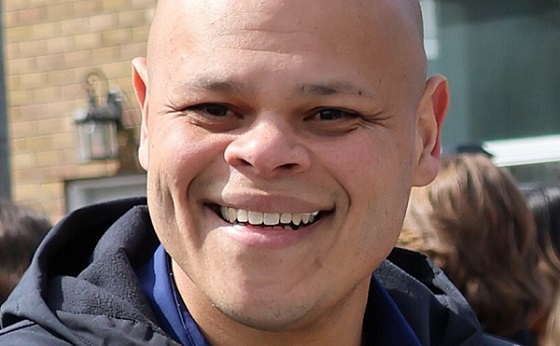
 National2 days ago
National2 days agoLiberal bill “targets Christians” by removing religious exemption in hate-speech law
-
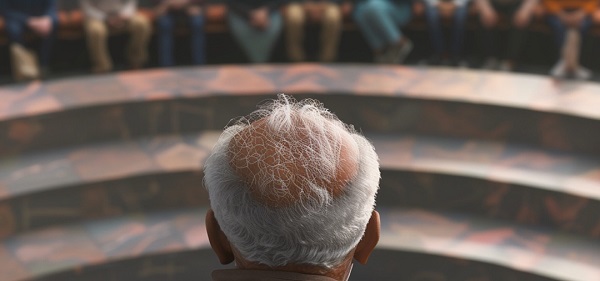
 C2C Journal19 hours ago
C2C Journal19 hours agoWisdom of Our Elders: The Contempt for Memory in Canadian Indigenous Policy
-

 Crime2 days ago
Crime2 days agoInside the Fortified Sinaloa-Linked Compound Canada Still Can’t Seize After 12 Years of Legal War
-
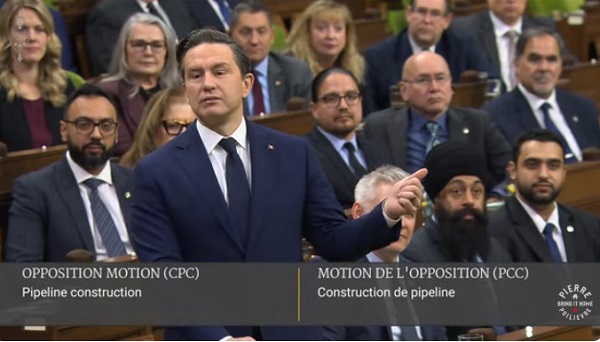
 Business2 days ago
Business2 days agoLooks like the Liberals don’t support their own Pipeline MOU
-

 Business1 day ago
Business1 day agoConservative MP warns Liberals’ national AI plan could increase gov’t surveillance
-

 Alberta18 hours ago
Alberta18 hours agoAlberta introducing three “all-season resort areas” to provide more summer activities in Alberta’s mountain parks
-

 Business2 days ago
Business2 days agoCanada Can Finally Profit From LNG If Ottawa Stops Dragging Its Feet
-
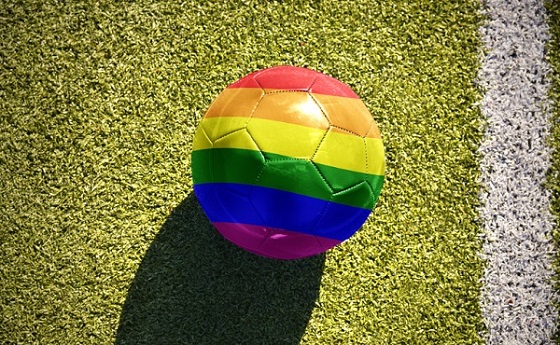
 Sports17 hours ago
Sports17 hours agoEgypt, Iran ‘completely reject’ World Cup ‘Pride Match’ plan

